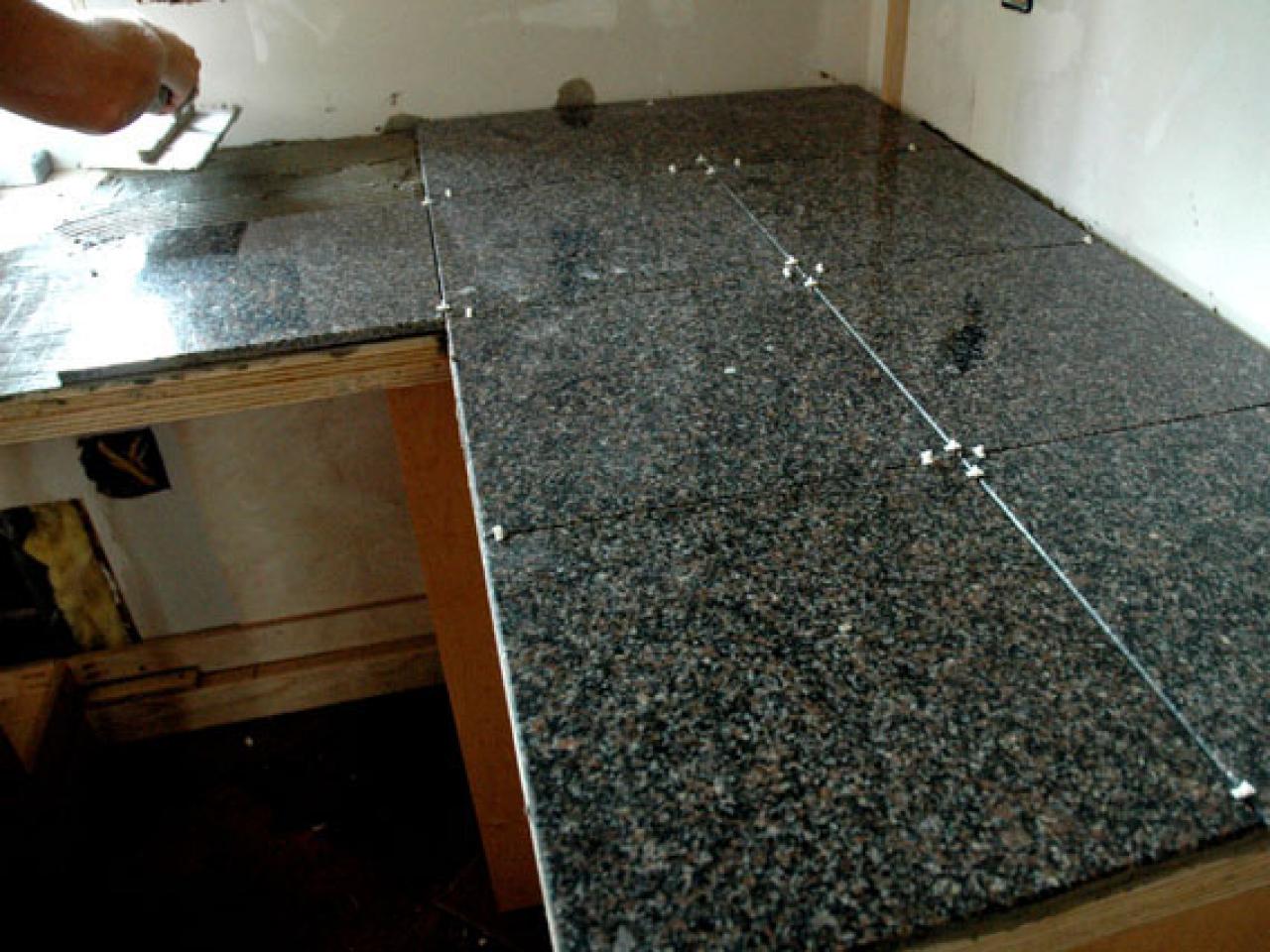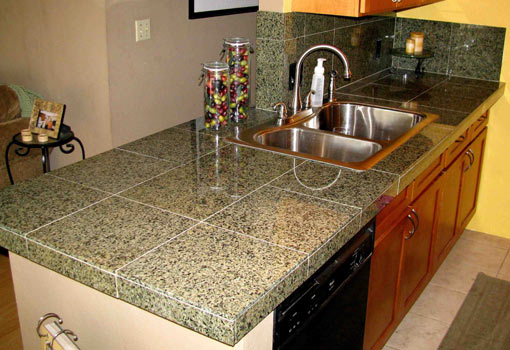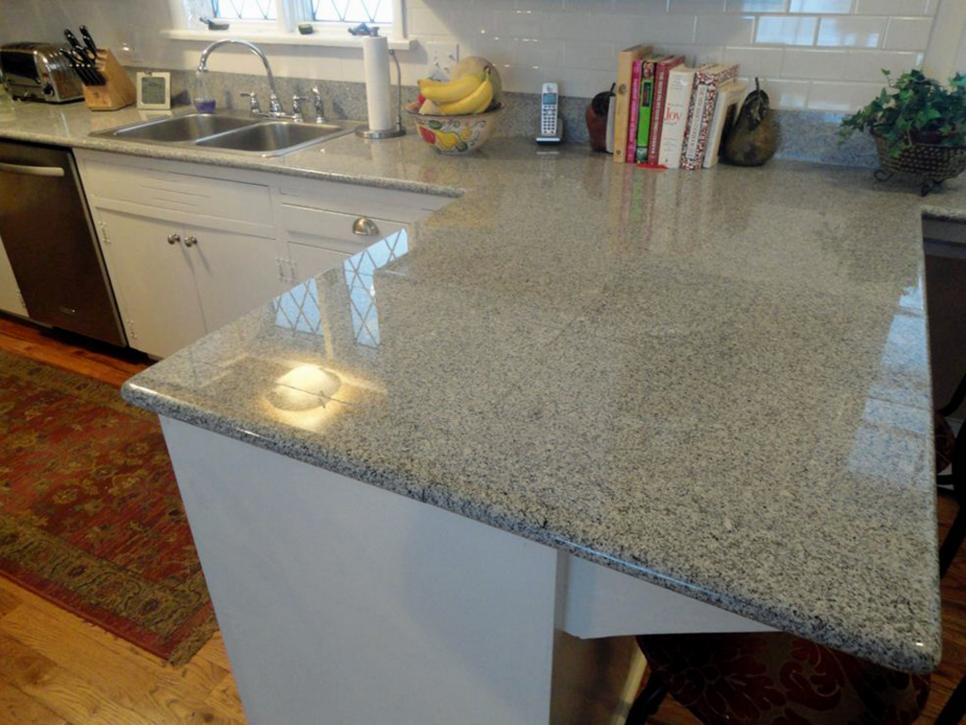Granite tile countertops offer a practical and attractive solution for kitchen surfaces, combining the elegance of natural stone with greater affordability than solid slabs. These tiles provide the same beautiful patterns and durability as full granite slabs but at a fraction of the cost, making them accessible to more homeowners. Available in various colors and finishes, granite tiles can complement any kitchen style from traditional to contemporary. The installation process allows for creative layouts and custom designs that aren’t possible with solid surfaces. While requiring more grout lines than slab countertops, proper sealing and maintenance keep granite tile surfaces hygienic and stain-resistant. This option delivers the upscale look of natural stone while offering unique advantages in terms of cost, customization, and installation flexibility.
Benefits of Granite Tile Countertops
Granite tiles provide significant cost savings compared to slab granite while maintaining much of the same visual appeal. Homeowners can achieve the high-end look of natural stone for about half the price of solid granite countertops. The modular nature of tiles also reduces material waste during installation, as cuts can be planned more efficiently. This makes granite tile an excellent choice for budget-conscious renovations that don’t want to compromise on quality.
The installation flexibility of granite tiles offers design possibilities unavailable with slabs. Different tile sizes and patterns can create unique layouts, from classic straight runs to more creative geometric designs. Tiles allow for easier replacement if damage occurs – just a single tile can be swapped rather than replacing an entire section. This modular approach also simplifies installation around sinks, cooktops, and other fixtures.
Durability remains a strong advantage of granite tiles, as they share the same heat-resistant and scratch-resistant properties as slabs. Properly sealed granite tiles withstand daily kitchen activities just as well as their solid counterparts. The natural stone composition resists bacteria when maintained correctly, making it a hygienic surface for food preparation areas.

Choosing the Right Granite Tile
Color selection significantly impacts the kitchen’s overall aesthetic. Lighter granite tiles like white or beige create an airy, spacious feel ideal for smaller kitchens. Darker options such as black or deep brown provide dramatic contrast and hide minor stains more effectively. Consider existing cabinetry and flooring when selecting tile colors to ensure harmony in the space.
Tile size affects both appearance and installation complexity. Larger tiles (12×12 inches or bigger) minimize grout lines for a more slab-like appearance but require precise cutting. Smaller tiles allow more intricate patterns but increase the number of grout lines. Standard kitchen countertops typically use tiles between 12×12 and 18×18 inches for optimal balance.
Finish options include polished, honed, or flamed surfaces. Polished granite offers a glossy, reflective appearance that highlights the stone’s natural patterns. Honed finishes provide a matte look that’s more subtle and contemporary. Flamed granite has a textured surface with excellent slip resistance, though this finish is less common for countertops.

Installation Process Overview
Proper substrate preparation ensures a stable foundation for granite tiles. Countertops require a sturdy base of plywood or cement backer board to prevent flexing that could crack tiles. All surfaces must be level and clean before installation begins. Professional installers often add a waterproof membrane for extra protection against moisture damage.
Thinset mortar application requires careful attention to achieve proper adhesion. Installers use notched trowels to create uniform ridges in the mortar bed. Each tile gets pressed firmly into place with slight twisting motions to ensure full contact. Spacers maintain consistent grout lines throughout the installation process.
Grouting and sealing complete the installation. After the thinset cures, sanded grout fills the joints between tiles. The entire surface then receives multiple coats of penetrating sealer to protect against stains. Proper sealing is especially important for granite tile countertops due to the increased number of grout lines compared to slabs.

Maintenance Requirements
Regular cleaning preserves the beauty of granite tile countertops. Use pH-neutral cleaners specifically formulated for natural stone to avoid damaging the sealer. Wipe up spills promptly, especially acidic substances like citrus juices or vinegar that could etch the surface. Daily maintenance with a soft cloth keeps the tiles looking their best.
Resealing maintains protection against stains and moisture penetration. Most granite tile countertops require resealing every 1-3 years depending on usage. The water test (observing how quickly water beads on the surface) helps determine when resealing is necessary. High-traffic kitchens may need more frequent applications.
Grout care is essential for granite tile countertops. Grout lines should be sealed along with the tiles to prevent staining and bacterial growth. Regular inspection for cracks or deterioration helps catch problems early. Colored grout matching the tile reduces the visual impact of inevitable wear over time.

Design Ideas and Combinations
Mix tile sizes for a custom look that breaks up visual monotony. Combine larger field tiles with smaller accent pieces to create borders or decorative patterns. This approach adds visual interest while maintaining the countertop’s functionality. Consider mosaic inserts for a truly unique design element.
Pair granite tiles with complementary backsplash materials. Continuing the same granite tiles up the backsplash creates a cohesive look, while contrasting materials add depth. Glass or metal backsplashes provide interesting texture combinations with granite’s natural appearance.
Edge treatments complete the countertop’s profile. Bullnose or ogee edge tiles create a finished look without requiring separate edge pieces. For a more contemporary appearance, squared edges emphasize the tile’s geometric nature. Some installations use solid granite edge strips for a slab-like appearance at the counter’s perimeter.

How does granite tile compare to solid granite countertops?
Granite tile offers similar aesthetic appeal and durability as solid granite at a lower cost, but with more visible grout lines. While slabs provide a seamless appearance, tiles allow for greater design flexibility and easier repairs. Both options require similar maintenance and sealing, though tile countertops may need more frequent grout cleaning. The choice depends on budget, design preferences, and tolerance for grout maintenance.
Can you put hot pans directly on granite tile countertops?
Like solid granite, granite tiles can withstand brief contact with hot cookware without damage. However, extreme or prolonged heat exposure could potentially crack tiles or damage the underlying adhesive. Using trivets or hot pads remains the safest practice to protect both the tiles and grout lines. The heat resistance makes granite tile suitable for areas near cooktops or ovens.

How difficult is DIY installation of granite tile countertops?
DIY installation is possible for experienced home improvers with proper tools and preparation. The process requires precise measuring, cutting, and leveling skills. Working with heavy granite tiles and achieving professional-looking grout lines presents challenges. Many homeowners prefer professional installation for critical kitchen surfaces, though tiling skills can be learned through practice on smaller projects first.
Do granite tile countertops look cheap compared to slabs?
Well-installed granite tile countertops with carefully matched grout can appear nearly indistinguishable from slabs, especially when using larger tiles. The key is professional installation with minimal, uniform grout lines. Some designs actually benefit from visible tile patterns, creating intentional visual interest. Quality materials and craftsmanship prevent a “cheap” appearance.

What’s the average lifespan of granite tile countertops?
With proper installation and maintenance, granite tile countertops can last 20-30 years or more. The granite tiles themselves are extremely durable, while the grout may require occasional renewal. Factors affecting longevity include usage patterns, cleaning habits, and climate conditions. Regular resealing and prompt repairs extend the countertop’s service life significantly.
How do you repair a cracked granite tile?
Individual cracked tiles can be replaced without redoing the entire countertop. Carefully remove the damaged tile by breaking it into pieces and scraping away old adhesive. Prepare the surface and install a new tile with matching thinset mortar. Color-matched grout blends the repair into the existing countertop. For extensive damage, consult a professional stone fabricator.

Granite Tile Better Homes & Gardens

Granite Tile Kitchen Countertops

Related articles: